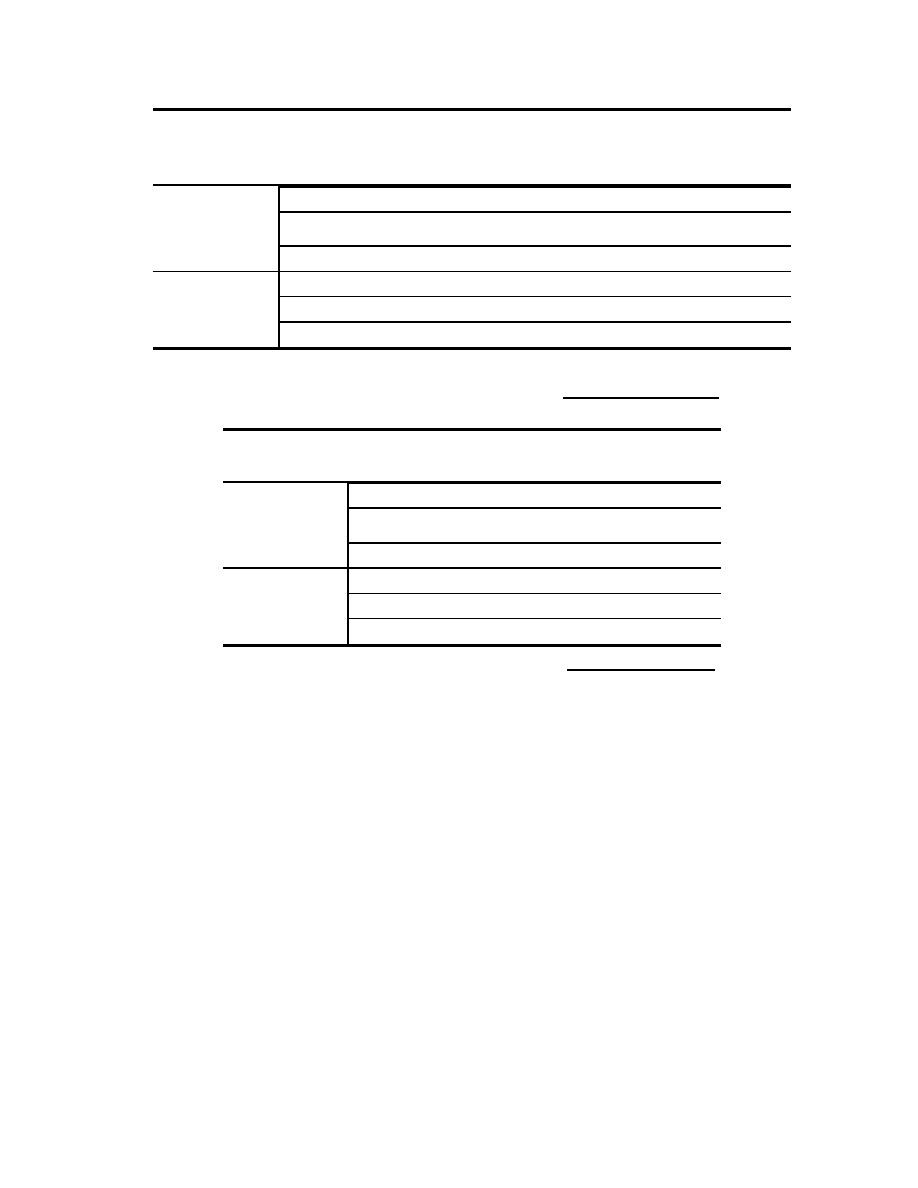

Custom Search
|
|

|
||
 Threat Vehicle Response Time
Maximum
Distance
Dist. from Access
(sec)
Velocity (mph)
Traveled (ft)
Control Point
High
4
75.8
354.4
204.4
Performance
6
91.2
599.4
449.4
Car
8
106.6
889.6
739.6
Large Truck
4
60.8
310.4
160.4
6
68.7
500.4
350.4
8
76.6
713.6
563.6
Note: Assumes Detection 150 ft prior to the Center of the Access Control Zone
Table 3-1 Response Time Based on Threat Scenario 1, Initial Velocity = 45 mph
Threat Vehicle Response Time
Maximum
Distance
(sec)
Velocity (mph)
Traveled (ft)
High
4
30.8
90.4
Performance
6
46.2
203.4
Car
8
61.6
361.6
Large Truck
4
15.8
46.4
6
23.7
104.4
8
31.6
185.6
Table 3-2 Response Time Based on Threat Scenario 2, Initial Velocity = 0 mph
Decreasing the initial velocity of the threat vehicle increases the available response time, or
correspondingly decreases the required length of the response zone. Therefore it is
recommended that roadway layout features such as reverse curves or S-curves be used to
reduce the maximum velocity traffic can proceed through the ECF. Reference 1 and MIL-
HDBK 1013/14 provide guidance on determining the maximum attainable velocity for curved
paths.
3.3.4 Safety Zone
The safety zone extends from the active and passive vehicle barriers, which surround the ECF.
It is possible that a terrorist vehicle will explode inside this contained area. Therefore,
consideration should be given to the effects an explosion may have on nearby personnel,
buildings, or assets. The safety zone extends from the passive and active barriers in all
directions. The acceptable standoff distance or safety zone would be determined by the
expected weight of the explosive charge, the facility or asset to be protected, and the
required level of protection.
Ref. 3 provides a thorough discussion of determining the proper standoff distances associated
with planning for vehicle barriers. Based on the assumed explosive weight, injury levels can
be predicted based on distance from the explosion. As discussed in Ref. 3, the user must
make decisions based on the risk involved and the probability that an incident would take
15
|
 |
|
 |
||